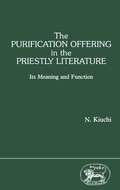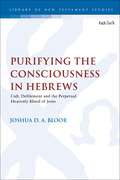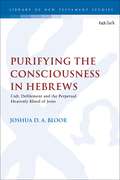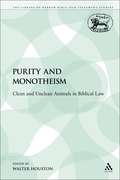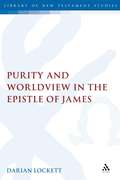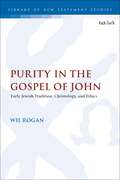- Table View
- List View
Pupil Book Study: An evidence-informed guide to help quality assure the curriculum
by Alex BedfordPupil Book Study is a window into the ‘lived experience’ of pupils, as opposed to just the observed experience. It is also a mirror in which to reflect professional practice and identify what helps learning, and what hinders it by outlining clear and coherent structures in which to talk with pupils and look at their books. Pupil Book Study gives headteachers, senior and middle leaders a systematic toolkit to evaluate the impact of the curriculum through studying teaching and learning. Infused with cognitive science research and evidence-informed practice, it offers schools the architecture for excellence; helping remove the risk of making assumptions. Pupil Book Study is a guide for schools that offers 7 specific and fully exemplified areas to focus quality assurance systems. The keystone between teaching, learning and the curriculum, Pupil Book Study offers schools the tools to explain why things are as they are and presents solutions to the areas that limit or hinder progress. Schools report that Pupil Book Study has been some of the most powerful and impactful work they have ever undertaken, resulting in positive change. In November 2020, Pupil Book Study was shared with the Deputy Director, Senior HMI and Policy makers at Ofsted.
Pupil Book Study: Reading: An evidence-informed guide to help quality assure the reading curriculum
by Alex Bedford Lauren Meadows'Pupil Book Study: Reading' provides evidence-led structures to shine a light on the true impact of a school’s reading provision. Building on the global success of the original Pupil Book Study frameworks, this guide translates these principles into practice to support leaders and teachers to evaluate their reading curriculum.The catch-all term ‘reading’ covers a wide-spanning aspect of schools’ provision, which is acknowledged to be central to pupils’ long-term success and well-being. It is vital that we have robust and meaningful mechanisms in schools to help us understand which aspects of this are working well and what might need further development. This requires us to examine each aspect of our reading provision in turn, through a lens which acknowledges the disciplinary differences between how we might approach teaching different elements of the reading curriculum. 'Pupil Book Study: Reading' provides the tools and structures to achieve this.Coherent approaches and tried and tested structures for talking to pupils about their reading help teachers and leaders to avoid assumptions and get under the skin of their reading provision. Headteachers and senior leaders who have undertaken 'Pupil Book Study: Reading' report that it has lifted the veil on their reading provision, allowing them to see, with clarity, how to refine and develop their offer.
Pupil Book Study: Reading: An evidence-informed guide to help quality assure the reading curriculum
by Alex Bedford Lauren Meadows'Pupil Book Study: Reading' provides evidence-led structures to shine a light on the true impact of a school's reading provision. Building on the global success of the original Pupil Book Study frameworks, this guide translates these principles into practice to support leaders and teachers to evaluate their reading curriculum.The catch-all term 'reading' covers a wide-spanning aspect of schools' provision, which is acknowledged to be central to pupils' long-term success and well-being. It is vital that we have robust and meaningful mechanisms in schools to help us understand which aspects of this are working well and what might need further development. This requires us to examine each aspect of our reading provision in turn, through a lens which acknowledges the disciplinary differences between how we might approach teaching different elements of the reading curriculum. 'Pupil Book Study: Reading' provides the tools and structures to achieve this.Coherent approaches and tried and tested structures for talking to pupils about their reading help teachers and leaders to avoid assumptions and get under the skin of their reading provision. Headteachers and senior leaders who have undertaken 'Pupil Book Study: Reading' report that it has lifted the veil on their reading provision, allowing them to see, with clarity, how to refine and develop their offer.
Pupil Experience
by John F. Schostak; Tom LoganFirst published in 1984, this book focuses upon pupil perspectives of schooling from first school to school leaver, taking their thoughts and feelings as accurate assessments of their experience.The study presents what was at the time new thinking and research findings on a wide range of important topics to provide an insight in
Pupil Experience
by John F. Schostak Tom LoganFirst published in 1984, this book focuses upon pupil perspectives of schooling from first school to school leaver, taking their thoughts and feelings as accurate assessments of their experience.The study presents what was at the time new thinking and research findings on a wide range of important topics to provide an insight in
Pupil Friendly IEPs and Target Sheets: And Other Pupil-Friendly Resources (PDF)
by Gillian ShottonInvolving children in discussing, planning and reviewing their targets for learning and behaviour is a key element of Every Child Matters (2003) and the Children's Plan (2007). This new edition of Gillian Shotton's best selling book, has been updated to include new templates for teachers looking to involve children in writing their Individual Education Plan (IEP), as well as the introduction of target sheets applicable for all primary and secondary students. The resource provides a useful tool for helping teachers put some of the Assessment for Learning strategies into practice. Features of the new edition include: - IEP templates with brand new illustrations - Pupil-friendly target sheets to engage learners in the target setting process - A Pupil Friendly Pastoral Support Programme developed specifically for secondary aged pupils - An Act of Kindness log to encourage and record positive acts in the classroom The accompanying CD Rom provides easy-to-use, engaging and fun templates which allow teachers to truly involve pupils in the planning and reviewing process. These resources can either be printed off as resource sheets to be filled in and coloured in by hand, or they can be filled in on-screen.
Pupil Premium Plus for Children in Care: A Critical Social Justice Analysis
by Benjamin TaylorChildren in care (CiC), or looked after children, in England achieve less well than their non-looked after peers and as such they receive pupil premium plus funding. This book explores how the pupil premium plus is used to support the educational outcomes of CiC, with specific focus on professionals' planning processes, the supports and interventions funded using pupil premium plus, and how the impact of the funding is tracked and monitored. It draws on empirical data from semi-structured interviews with designated CiC teachers, social workers, and school heads, and document analysis of 20 school pupil premium strategies. Ben Taylor uses educational theory to analyse the data, drawing on humanist theories, social pedagogy and critical pedagogy to identify key themes in the data including race and class. He argues that pupil premium plus is valued by professionals, who care deeply about CiC. He shows how it is seen as an important and supportive tool which goes beyond the academic to include social and emotional interventions and curriculum enrichment.
Pupil Premium Plus for Children in Care: A Critical Social Justice Analysis
by Benjamin TaylorChildren in care (CiC), or looked after children, in England achieve less well than their non-looked after peers and as such they receive pupil premium plus funding. This book explores how the pupil premium plus is used to support the educational outcomes of CiC, with specific focus on professionals' planning processes, the supports and interventions funded using pupil premium plus, and how the impact of the funding is tracked and monitored. It draws on empirical data from semi-structured interviews with designated CiC teachers, social workers, and school heads, and document analysis of 20 school pupil premium strategies. Ben Taylor uses educational theory to analyse the data, drawing on humanist theories, social pedagogy and critical pedagogy to identify key themes in the data including race and class. He argues that pupil premium plus is valued by professionals, who care deeply about CiC. He shows how it is seen as an important and supportive tool which goes beyond the academic to include social and emotional interventions and curriculum enrichment.
Pupil, Teacher and Family Voice in Educational Institutions: Values, Opinions, Beliefs and Perspectives
by Janice Wearmouth Andrew GoodwynTaking a novel approach to the concept of ‘voice’ within education systems, this insightful text considers the extent to which the values, opinions, beliefs and perspectives of pupils, families, teachers, and members of senior management are heard in educational settings, and explores what can be learned from integrating their views and opinions in decision-making processes. Pupil, Teacher and Family Voice in Educational Institutions traces the historical and legal developments which have heralded an increased appreciation of individuals’ perspectives in key decision-making processes. Chapters consider how various parties can be encouraged to voice their opinions and beliefs, and address the issues and challenges which may face institutions as they seek to create an atmosphere of open and active consultation and engagement. Drawing on evidence-based research, case studies and personal accounts, chapters reflect upon the concept of ‘voice’ in diverse settings and acknowledge the sometimes significant divergence between the intended and actual extent to which such opinions, beliefs and perspectives are reflected in day-to-day practice. Offering in-depth exploration of the concept of ‘voice’ and the benefits, implications, challenges and practicalities associated with it, this text will be of interest to future and in-service teachers, educational researchers and policy makers.
Pupil, Teacher and Family Voice in Educational Institutions: Values, Opinions, Beliefs and Perspectives
by Janice Wearmouth Andrew GoodwynTaking a novel approach to the concept of ‘voice’ within education systems, this insightful text considers the extent to which the values, opinions, beliefs and perspectives of pupils, families, teachers, and members of senior management are heard in educational settings, and explores what can be learned from integrating their views and opinions in decision-making processes. Pupil, Teacher and Family Voice in Educational Institutions traces the historical and legal developments which have heralded an increased appreciation of individuals’ perspectives in key decision-making processes. Chapters consider how various parties can be encouraged to voice their opinions and beliefs, and address the issues and challenges which may face institutions as they seek to create an atmosphere of open and active consultation and engagement. Drawing on evidence-based research, case studies and personal accounts, chapters reflect upon the concept of ‘voice’ in diverse settings and acknowledge the sometimes significant divergence between the intended and actual extent to which such opinions, beliefs and perspectives are reflected in day-to-day practice. Offering in-depth exploration of the concept of ‘voice’ and the benefits, implications, challenges and practicalities associated with it, this text will be of interest to future and in-service teachers, educational researchers and policy makers.
Pupils in Transition
by John Gardner Professor Gill NichollsFocusing on the move from primary to secondary school, this book aims to help teachers and school managers to recognize and deal with the often traumatic effects that this transition has on young people's lives. The book: * explores the links between primary and secondary curricula * offers specific advice on how to meet the needs of children in transition * provides materials for investigating transition which will enable schools to identify the strengths and weaknesses in their approach.
Pupils in Transition
by John Gardner Professor Gill NichollsFocusing on the move from primary to secondary school, this book aims to help teachers and school managers to recognize and deal with the often traumatic effects that this transition has on young people's lives. The book: * explores the links between primary and secondary curricula * offers specific advice on how to meet the needs of children in transition * provides materials for investigating transition which will enable schools to identify the strengths and weaknesses in their approach.
Pupils with Learning Difficulties in Mainstream Schools
by Christina Tilstone Christopher Robertson Jill Porter Penny LaceyFirst Published in 2000. Routledge is an imprint of Taylor & Francis, an informa company.
Pupils with Learning Difficulties in Mainstream Schools
by Christina Tilstone Christopher Robertson Jill Porter Penny LaceyFirst Published in 2000. Routledge is an imprint of Taylor & Francis, an informa company.
Puppet Plays Plus: Using Stock Characters to Entertain and Teach Early Literacy (Non-ser.)
by Laura L. IakovakisJoin Piggy Rae and her silly friends Bernie Bear, Tommy Turtle, Alistair McMoose and others in these engaging and interactive puppet skits that encourage both laughter and learning. This guide gives you everything you need for lively storytimes. In addition to ten complete scripts, you'll find literacy tips, preparatory checklists of materials and props needed, patterns, lists of books for literacy building displays, activities that relate to the story and promote early literacy, and take-home reproducibles for caregivers that help them reinforce the six early literacy skills. Designed for PreK-Grade 3, the puppet plays are perfect for in-house storytime settings and for community outreach projects. Grades PreK-3.
Puraporul Venba Malai
by IyyanaarithanaarThis lesson offers a brief introduction to Pura Porul Ilakkanam. Tamil grammar is broadly classified into 5 major divisions - ie the letter (sol), the word or ezhuthu , content or porul, prosody or yappu and figures of speech or ani. “Porul” is the content or the subject of any literary work. The ethics and codes governing the social and domestic life of the Tamils is largely the subject underlying ancient Tamil literature. Tamil grammarians devised the Porul Ilakkanam to codify the content of poetry. Similar to the way in which the inner universe is divided into 7 ‘tinais’ or modes, Tholkappiar, the ancient Tamil grammarian, also codified the behaviour pertaining to the external world into 7 ‘tinais’- viz. ‘vetchi’, vanji’, ‘uzhinjai’, ‘ thumbai’, ‘vaagai’, ‘kanchi’ and ‘paadaan’. ‘Pannirupadalam’ was the first grammar text to explain the various pura tinais. It was composed by the 12 disciples of Agathiyar, including Tholkappiar.Only a few verses of this text are extant today. ‘Puraporul Venba Malai’ is another grammar text on‘puram’ written later by Iyyanaarithanaar.
The Purchasing and Supply Manager's Guide to the C.P.M. Exam
by Fred Sollish John SemanikReal World Scenarios for Practical Insights into the Field of Purchasing and Supply Management Whether you're a purchasing or supply management professional seeking to validate the skills and knowledge acquired through years of practical experience, or a relative newcomer to the field looking to strengthen your resume, the C.P.M. certification from the Institute for Supply Management (ISM) provides you with the means to do so. The Purchasing and Supply Manager's Guide to the C.P.M. Exam was developed to help you prepare for the four modules that comprise the C.P.M. exam, and includes additional study tools designed to reinforce understanding of crucial subject areas. KEY TOPICS INCLUDE: Purchasing Process. Identifying requirements, preparation of solicitations, supplier analysis, contract execution, implementation, and administration. Supply Environment. Negotiations, information technology, quality issues, internal relationships, and external relationships. Value Enhancement Strategies. Sourcing analysis, supply and inventory management, value enhancing methods, forecasting and strategies. Management. Management and organization, and human resource management. This Study Guide is not sponsored by, endorsed by, or affiliated in any way with the Institute for Supply Management (ISM). ISM and C.P.M. are trademarks or registered marks of the Institute for Supply Management. This publication may be used in assisting students to prepare for the C.P.M. exam, but neither Harbor Light Press nor ISM warrants that use of this publication will ensure passing of the exam. Note: CD-ROM/DVD and other supplementary materials are not included as part of eBook file.
Pure Mathematics For CCEA A2 Level
by Luke RobinsonComprehensively updated and re-designed, this edition of 'Pure Mathematics for CCEA A2 Level' fully covers unit A2 1 of the CCEA specification. Each section of the book contains theory and examples with key words and definitions throughout. It also provides a large number of exercises with answers included at the back of the book.
The Purification Offering in the Priestly Literature: Its Meaning and Function (The Library of Hebrew Bible/Old Testament Studies)
by N. KiuchiThe aim of this incisive study is to clarify the symbolism of the so-called 'sin' (hatta't) offering, better understood as a purification offering. A major concern of the work is to explain the variety of the atonement ceremonies in Leviticus in which the 'purification offering' appears. This variety has hitherto been explained as the result of tradition-historical development (Janowski), or in terms of degrees of uncleanness (Milgrom). Dr Kiuchi presents a new way of looking at the evidence for the offering with special reference to the two incidents in Leviticus 10. The concept of atonement (kipper) includes both purification and guilt-bearing, for when the priest purifies sancta he bears the guilt associated with the uncleanness. The varieties of blood manipulation are determined by the occasion, while the varieties of disposal of the sacrificial flesh hinge on whether the agent of the atonement is also a beneficiary of it.
Purifying the Consciousness in Hebrews: Cult, Defilement and the Perpetual Heavenly Blood of Jesus (The Library of New Testament Studies)
by Joshua D. BloorJoshua D. A. Bloor argues that the purification of the consciousness of sin, via Jesus' perpetual heavenly blood offering, is a vital motif for understanding Hebrews' sacrificial argumentation, and vice-versa. Jesus' 'objective' earthly achievements are many, yet only his 'subjective' heavenly blood offering purges the heavenly tabernacle and subsequently the consciousness of sin. Bloor views the Levitical cult as having a positive role in Hebrews, with Levitical 'guilt' foreshadowing and informing Hebrews' notion of the 'consciousness of sin'. Levitical sacrifices could purge the consciousness, but only Jesus' heavenly blood can offer complete perpetual purgation. This blood is a qualitative type of purgation which continually speaks in heaven, offering eternal assurance for the recipients regarding their consciousness of sin. Bloor begins with the 'defiled consciousness' and situates the world of Hebrews within cultic defilement, enabling the consciousness of sin and its cosmic implications to be properly understood. From here, the solution to a defiled consciousness is explored by examining Hebrews' cultic argumentation. Bloor highlights the distinctive purposes inherent in both Jesus' earthly and heavenly achievements, with the latter concerned particularly with Yom Kippur imagery and the purgation of the consciousness. Bloor concludes by differentiating between Jesus' session, present heavenly activity and perpetual heavenly blood offering. Throughout this volume, Bloor engages, critiques and advances current discourse concerning the nature and timing of Jesus' offering in Hebrews.
Purifying the Consciousness in Hebrews: Cult, Defilement and the Perpetual Heavenly Blood of Jesus (The Library of New Testament Studies)
by Joshua D. BloorJoshua D. A. Bloor argues that the purification of the consciousness of sin, via Jesus' perpetual heavenly blood offering, is a vital motif for understanding Hebrews' sacrificial argumentation, and vice-versa. Jesus' 'objective' earthly achievements are many, yet only his 'subjective' heavenly blood offering purges the heavenly tabernacle and subsequently the consciousness of sin. Bloor views the Levitical cult as having a positive role in Hebrews, with Levitical 'guilt' foreshadowing and informing Hebrews' notion of the 'consciousness of sin'. Levitical sacrifices could purge the consciousness, but only Jesus' heavenly blood can offer complete perpetual purgation. This blood is a qualitative type of purgation which continually speaks in heaven, offering eternal assurance for the recipients regarding their consciousness of sin. Bloor begins with the 'defiled consciousness' and situates the world of Hebrews within cultic defilement, enabling the consciousness of sin and its cosmic implications to be properly understood. From here, the solution to a defiled consciousness is explored by examining Hebrews' cultic argumentation. Bloor highlights the distinctive purposes inherent in both Jesus' earthly and heavenly achievements, with the latter concerned particularly with Yom Kippur imagery and the purgation of the consciousness. Bloor concludes by differentiating between Jesus' session, present heavenly activity and perpetual heavenly blood offering. Throughout this volume, Bloor engages, critiques and advances current discourse concerning the nature and timing of Jesus' offering in Hebrews.
Purity and Monotheism: Clean and Unclean Animals in Biblical Law (The Library of Hebrew Bible/Old Testament Studies)
by Walter J. HoustonThe distinction between clean and unclean animals, probably originating in tensions between shepherds and farmers, is in the biblical laws of Leviticus 11 and Deuteronomy 14 transformed into an important theological principle. In this wide-ranging and elegantly written study, Houston argues that the avoidance of 'unclean' foods is a mark of the exclusive devotion of Israel to one god. In a concluding chapter, it is suggested that the abolition of the distinction in early Christianity corresponds to the universal horizon of the new faith.
Purity and Worldview in the Epistle of James: Purity And Worldview In The Epistle Of James (The Library of New Testament Studies #366)
by Darian LockettArguing against restricting the meaning of purity language to the individual moral sphere (as many commentaries do), the central argument of Purity and Worldview in the Epistle of James is that purity language both articulates and constructs the worldview in James's epistle. Lockett offers a taxonomy of purity language, applied as a heuristic guide to understand the function of purity and pollution in the epistle. Through this analysis the study concludes that James is not calling for sectarian separation, but rather demonstrates a degree of cultural accommodation while calling forth specific socio-cultural boundaries between the readers and the world.
Purity in the Gospel of John: Early Jewish Tradition, Christology, and Ethics (The Library of New Testament Studies)
by Wil RoganWil Rogan argues that, contrary to twentieth-century interpretation, the Fourth Gospel did not replace purity with faith in Jesus. Instead, as with other early Jewish writings, its discourse about purity functions as a way to make sense of life before God in the world. He suggests that John's Gospel employs biblical and early Jewish traditions of purity associated with divine revelation and Israel's restoration to narrate how God's people are prepared for the coming of Jesus and enabled by him to have life with God characterized by love. After evaluating different theories of purity for the interpretation of the Fourth Gospel, Rogan explores John the Baptist as an agent of ritual purification, Jesus as the agent of moral purification, and the disciples of Jesus as ones who are (or are not) made morally pure by Jesus. While purity is not one of the Fourth Gospel's primary focuses, Rogan stresses that the concept figures into some of its most significant claims about Christology, the doctrine of salvation, and ethics. Through purity, the Fourth Gospel guards continuity with the past while placing surprising conditions on participation in Israel's future.
Purity in the Gospel of John: Early Jewish Tradition, Christology, and Ethics (The Library of New Testament Studies)
by Wil RoganWil Rogan argues that, contrary to twentieth-century interpretation, the Fourth Gospel did not replace purity with faith in Jesus. Instead, as with other early Jewish writings, its discourse about purity functions as a way to make sense of life before God in the world. He suggests that John's Gospel employs biblical and early Jewish traditions of purity associated with divine revelation and Israel's restoration to narrate how God's people are prepared for the coming of Jesus and enabled by him to have life with God characterized by love. After evaluating different theories of purity for the interpretation of the Fourth Gospel, Rogan explores John the Baptist as an agent of ritual purification, Jesus as the agent of moral purification, and the disciples of Jesus as ones who are (or are not) made morally pure by Jesus. While purity is not one of the Fourth Gospel's primary focuses, Rogan stresses that the concept figures into some of its most significant claims about Christology, the doctrine of salvation, and ethics. Through purity, the Fourth Gospel guards continuity with the past while placing surprising conditions on participation in Israel's future.













